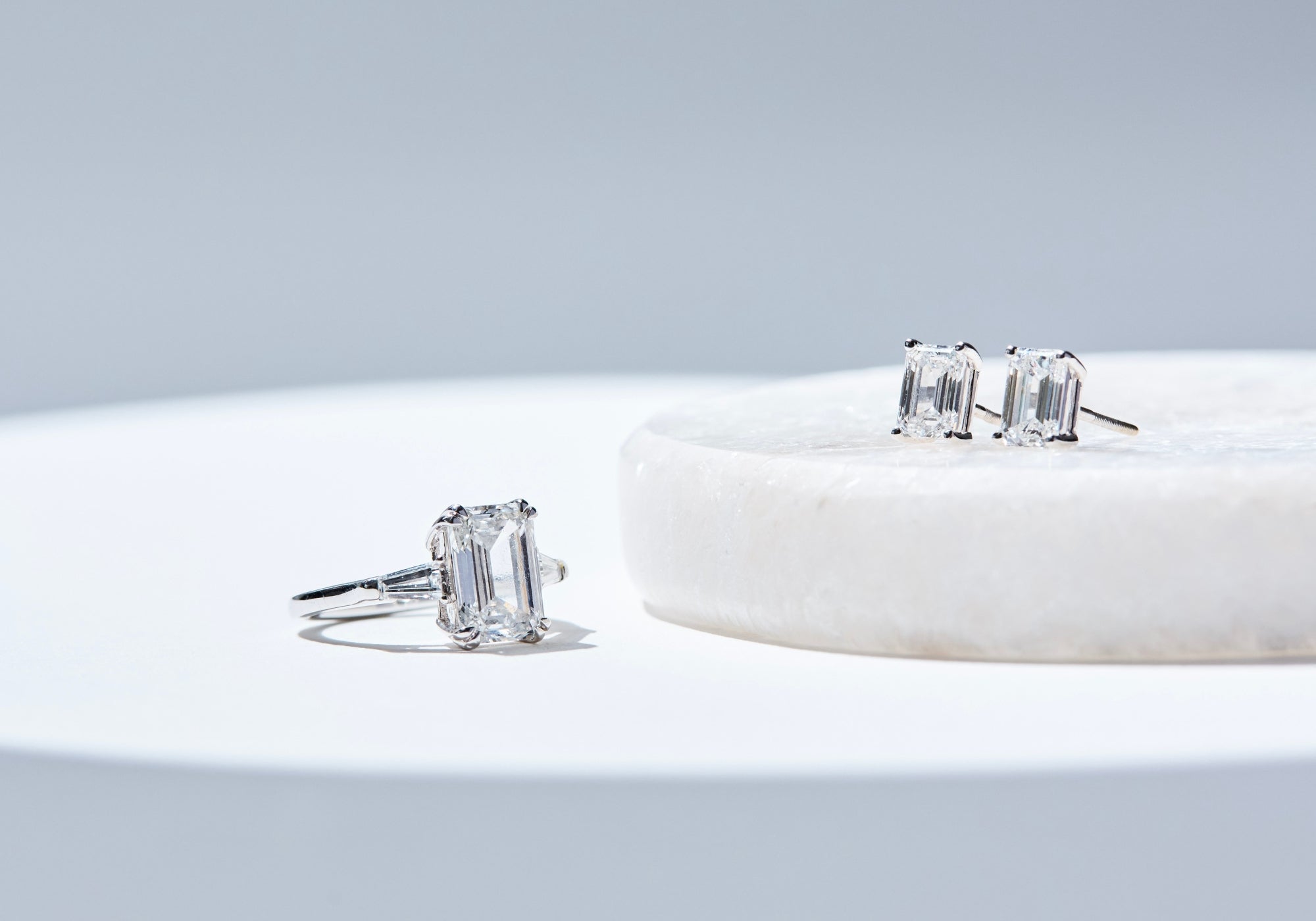
OUR COMPANY
Solaris is a modern diamond brand. We craft engagement rings and fine jewelry that blend understated elegance with bespoke design, personalized to your story.
Our design philosophy centers on balance, proportion, and timeless beauty — creating pieces to celebrate life’s milestones and to be worn with joy every day.
OUR FOUNDER

My journey began in Thailand, where I was raised with an appreciation for tradition and beautiful design. Jewelry was often tied to family heirlooms — pieces that carried meaning and were passed down through generations.
The journey continues
My path later took me across the world to Stanford University, where I studied Economics and Management Science.
Beyond academics, Stanford nurtured my creativity, inclusivity, and entrepreneurial spirit.
For the next decade, I built a career in finance, working alongside founders and executives on mergers, acquisitions, and strategic investments. That experience sharpened my eye for detail, discipline, and long-term value.
The beginning of Solaris
Rooted in design and craftsmanship, Solaris is the culmination of these chapters. With a background in finance and diamond training, we approach every detail — from sourcing to design — with precision and care. Above all, Solaris reflects a commitment to sustainability and inclusivity: reimagining diamond jewelry as conflict-free treasures to be cherished for generations.
- Su Parapiboon, CFA, Graduate Diamond
OUR VALUES
Our values guide every decision we make, from the diamonds we choose to the way we design each piece of jewelry.
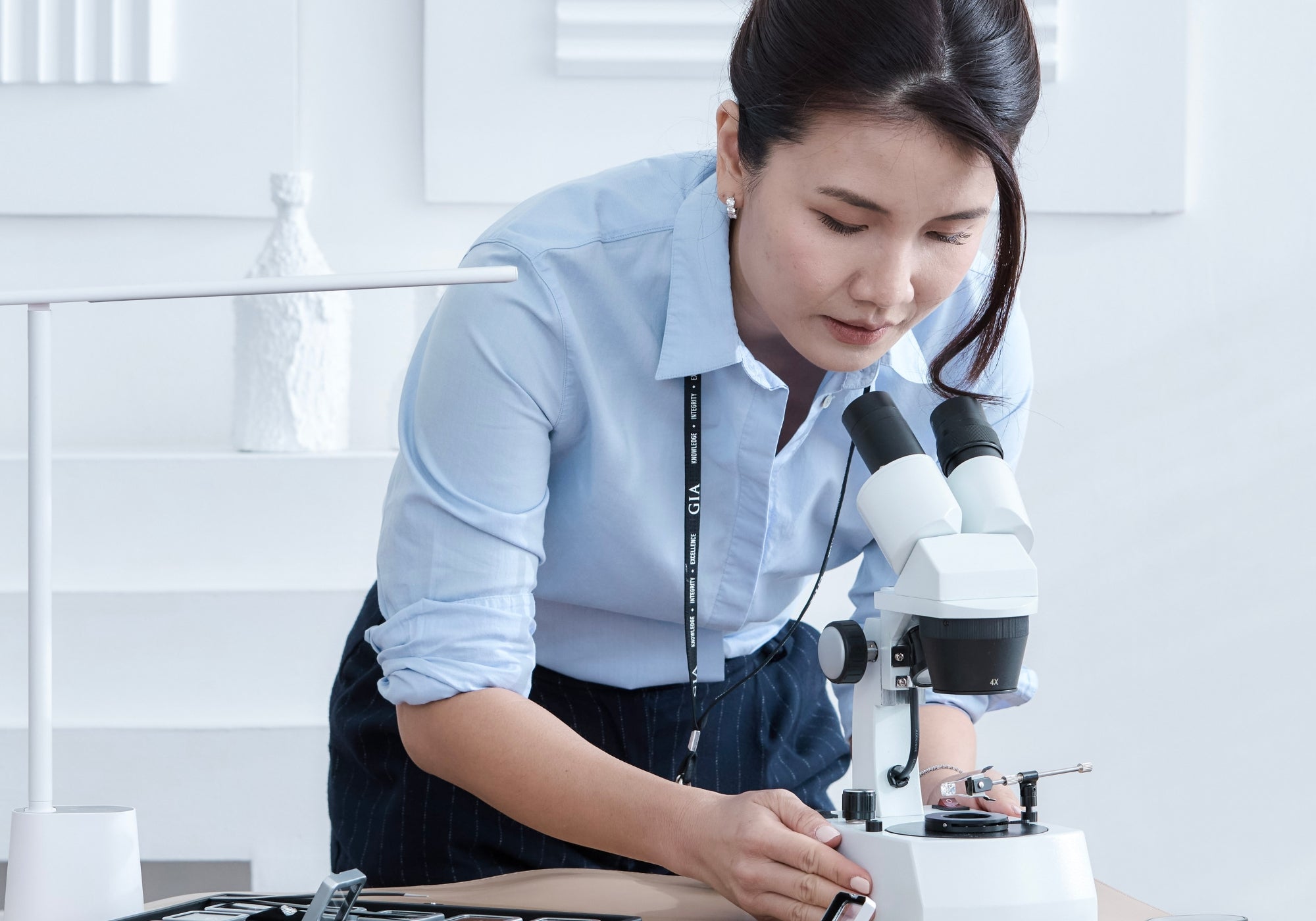
Trust and Transparency
Trust is at the heart of everything we do. We go beyond selling—we educate, empowering our customers to make informed decisions. From sourcing and craftsmanship to communication, transparency guides every step of our process.
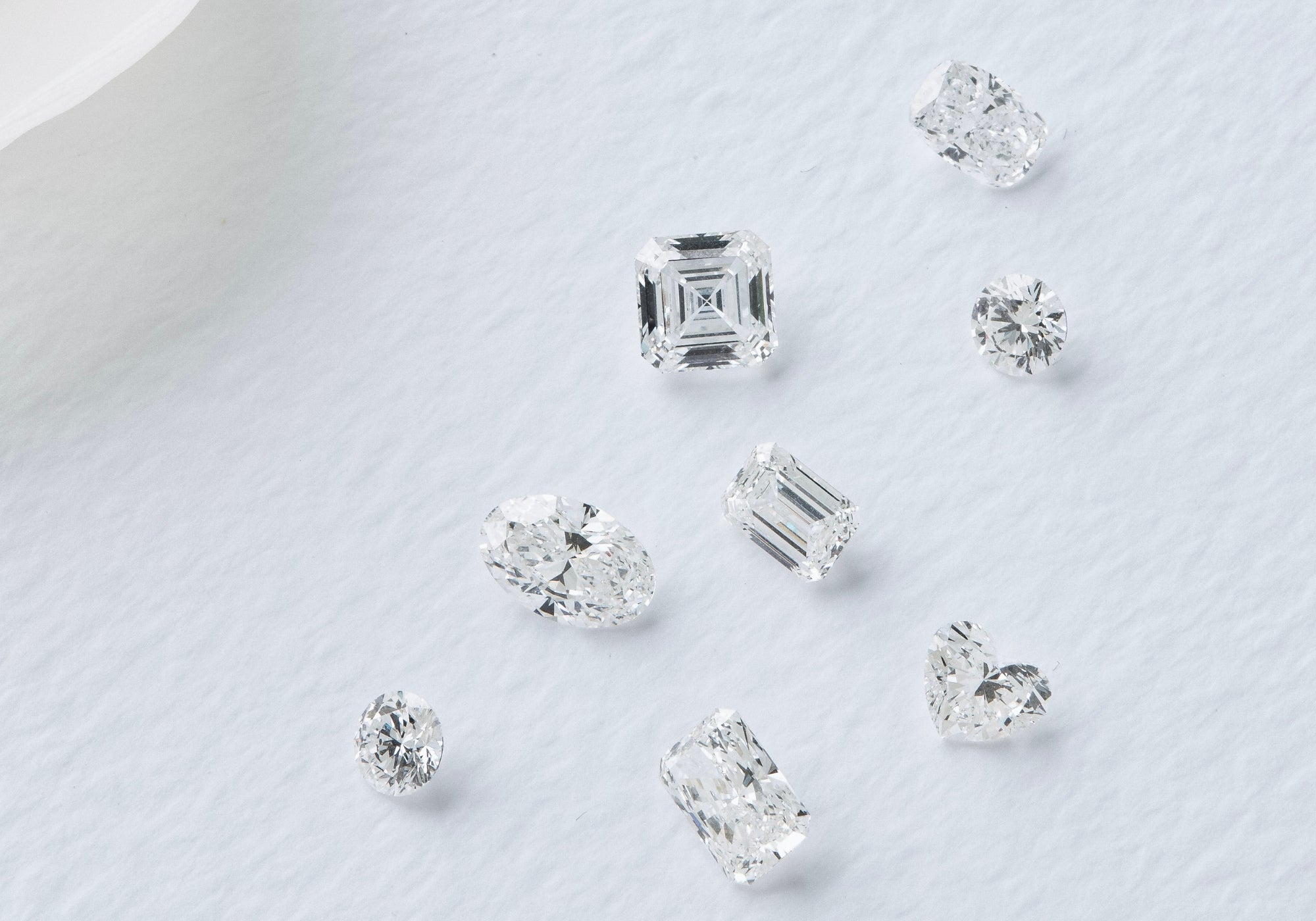
Sustainability
Our brand values enduring beauty and conscious choices over fast fashion. Each piece is crafted with solid gold and slowly grown lab diamonds—conflict-free and a more sustainable modern alternative. Designed for longevity, our jewelry is meant to be cherished for a lifetime.
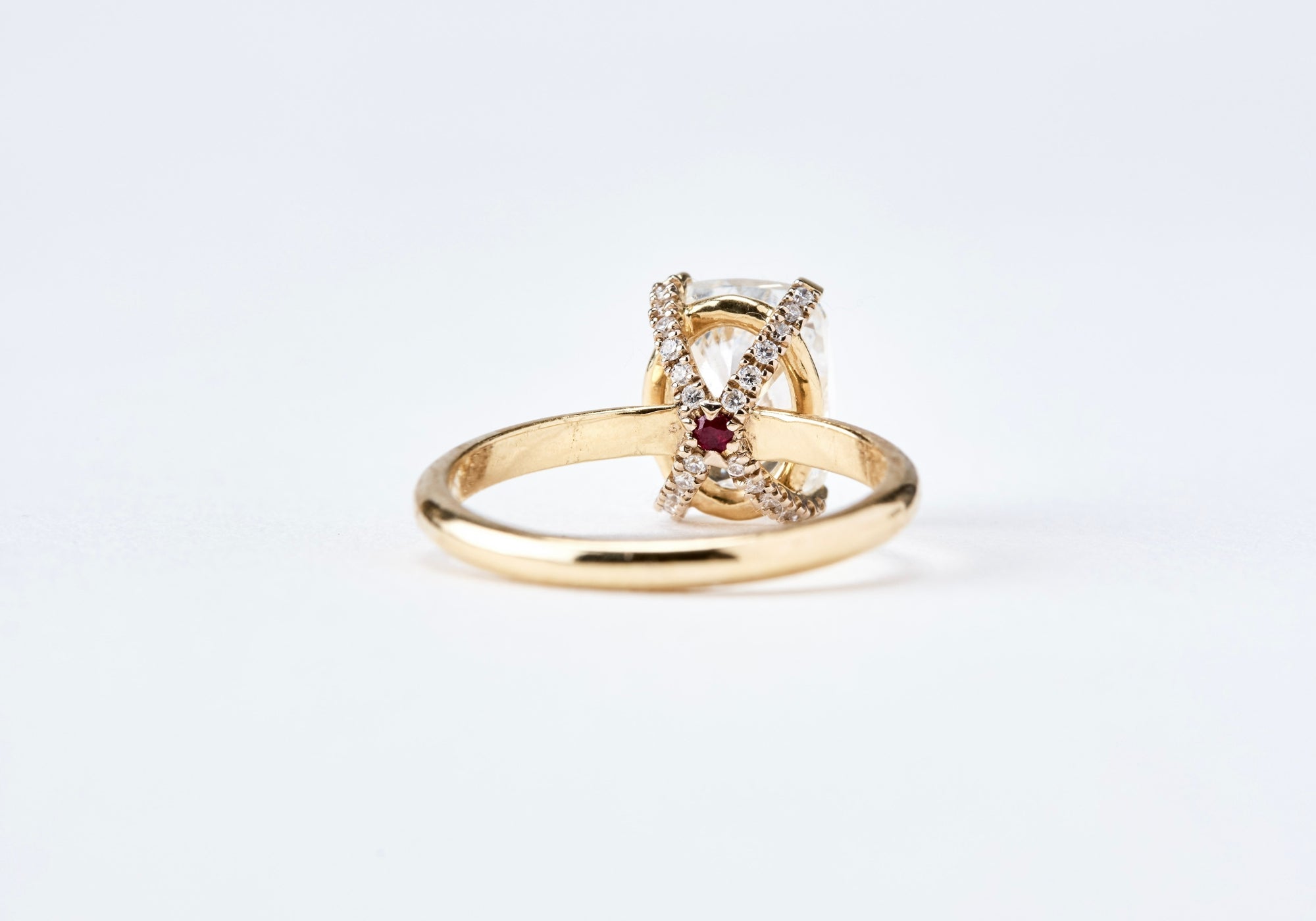
Thoughtful Design
Our brand values enduring beauty and conscious choices over fast fashion. Each piece is crafted with solid gold and slowly grown lab diamonds—conflict-free and a more sustainable modern alternative. Designed for longevity, our jewelry is meant to be cherished for a lifetime.
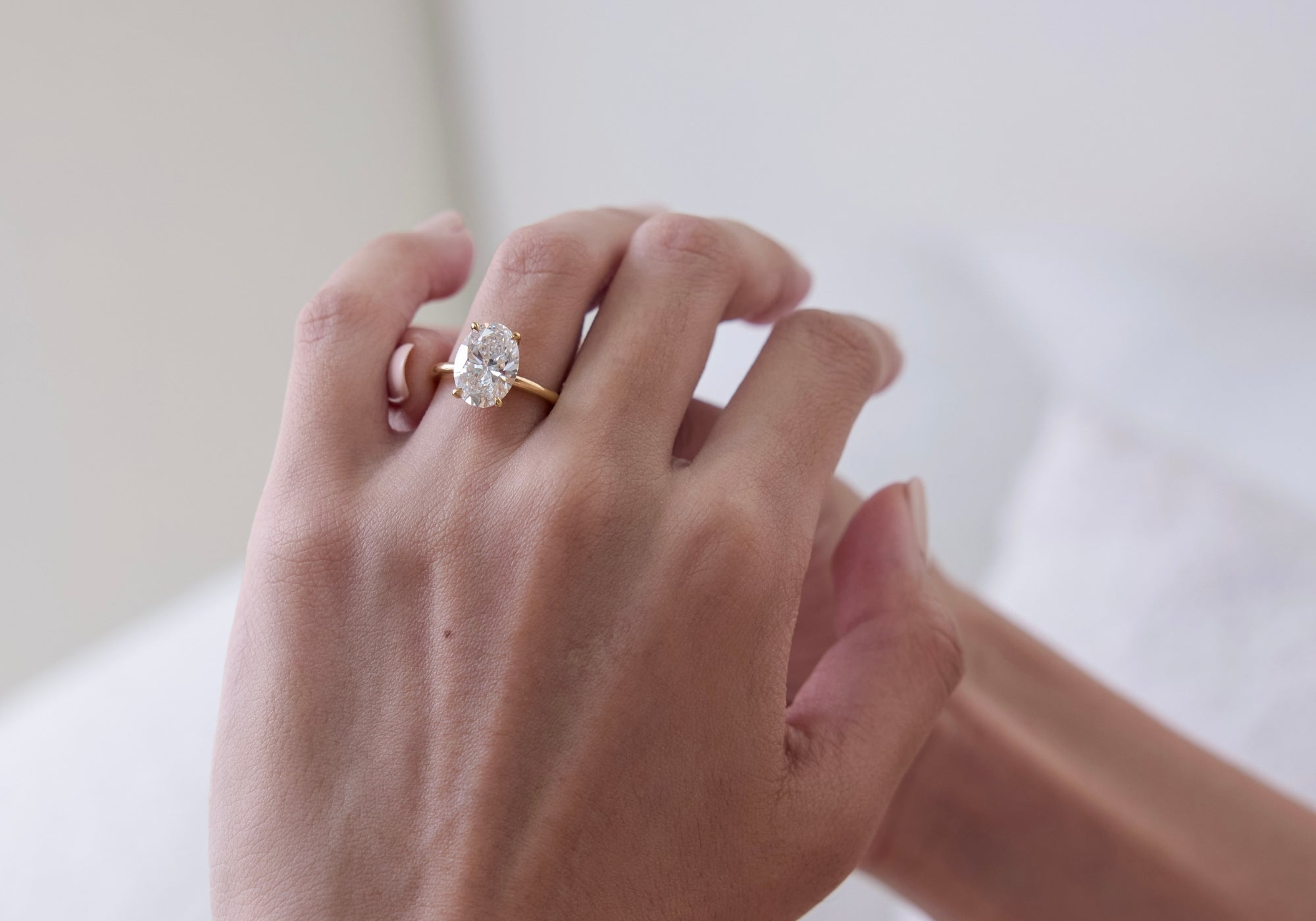
Inclusivity
Innovation in lab-grown diamonds makes the beauty of diamonds more accessible than ever. As a direct-to-consumer brand, we take pride in offering fair prices, making luxury an experience that welcomes everyone.
Frequently Asked Questions
Our Company
We understand that purchasing diamond jewelry is both a meaningful and significant investment. At Solaris, we’re committed to transparency and customer confidence—starting from diamond sourcing and craftsmanship all the way to customer care.
All our diamonds are genuine lab-grown, and all our settings are made from solid gold (never plated or vermeil). If you can prove otherwise with certified documentation, we will provide a full refund.
All diamonds over 1 carat come with certificates from trusted gemological labs such as IGI or GIA, and include matching laser inscriptions.
We provide detailed product information, educational resources, and a physical showroom in Singapore for in-person viewings. For international clients, we also offer virtual consultations so you can view your piece before committing.
Solaris is headquartered in Singapore and is a licensed Precious Stones and Precious Metals (PSPM) Dealer, regulated by the Ministry of Law.
We work exclusively with trusted, renowned CVD diamond growers known for their advanced techniques and commitment to quality. Our diamonds are grown slowly, optimizing crystal formation for superior clarity, transparency, and brilliance. This method minimizes defects and ensures exceptional color purity.
Our diamonds are then carefully selected based on the Four Cs:
Cut: Less than 1% of diamonds worldwide achieve Excellent or Ideal cuts. We prioritize these grades to ensure our diamonds have the optimal balance of brightness, fire, and scintillation, delivering exceptional light performance.
Color: Solaris diamonds are carefully grown with advanced techniques to avoid the brown, gray, or blue tints often seen in rapidly and poorly grown CVD diamonds. We prioritize slow, controlled growth to ensure colorless diamonds (D-F) that are free from unwanted hues.
Clarity: Solaris diamonds are graded VS and VVS, with only minute clarity characteristics. If you're looking for flawless diamonds, we can offer IF grades upon request.
Carat: We do not focus on maximizing carat weight at the expense of cut or light performance.
All Solaris pieces are crafted using solid gold—either 14k or 18k, depending on the design.
We do not use gold-plated or gold vermeil settings, which are commonly found in fashion or costume jewelry.
Gold-plated jewelry consists of a very thin layer of gold (often less than 0.5 microns) applied over a base metal such as brass. The gold layer wears off easily, especially with frequent wear, and the base metal underneath can oxidize or irritate the skin.
Gold vermeil is slightly better—it uses sterling silver as the base and has a thicker gold coating (at least 2.5 microns). However, it still fades and tarnishes over time, especially with exposure to water, sweat, or cosmetics.
In contrast, solid gold is the material of fine jewelry. It contains gold throughout the piece—not just on the surface—making it:
- Highly durable and resistant to tarnish or fading
- Long-lasting, even with everyday wear
- Polishable, so light scratches can be restored and the piece will look as good as new
- Safe for sensitive skin, especially in higher karat alloys
At Solaris, we believe jewelry should be timeless and lasting. That’s why we only work with solid gold, ensuring every piece you invest in is worthy of becoming part of your story for years, or even generations, to come.
We personally source and stock every diamond in our collection. Each stone is handpicked by our in-house gemologist—we do not drop-ship. This ensures that every item meets our quality and transparency standards.
We specialize in the highest quality diamonds, offering only Excellent/Ideal cuts in colorless (D-E-F) stones with minute clarity characteristics (VS/VVS).
Our pieces are crafted by skilled artisans who specialize in fine jewelry. And because we believe in empowering our clients, we also provide education and expert guidance to help you choose a piece that’s right for you—one you’ll love for years to come.
Our Services
Yes. All diamonds over 1 carat come with certificates from trusted gemological labs such as IGI or GIA, and include matching laser inscriptions.
For diamonds under 1 carat, our in-house gemologist inspects and grades each stone (we only use VS+ clarity and D–F color). If you prefer a lab certificate, it's available at an additional cost.
It depends on the piece:
- Rings (non-eternity): We offer complimentary resizing of up to two sizes. Please allow 3–5 working days.
- Eternity rings: These are bespoke and sized to perfection at the time of order.
- Bracelets & necklaces: Downsizing is free of charge—you keep the extra diamonds. Upsizing is considered a custom order.
We stand behind our quality. If a manufacturing defect is found within 30 days, we’ll repair or replace your piece at no cost. After that, or for accidental damage or wear and tear, we offer repair services at a reasonable rate.
To keep your diamond jewelry looking its best, we recommend the following:
- Daily care: avoid contact with harsh chemicals (e.g. household cleaners, perfumes, and lotions)
- Storage: Store your pieces separately in a soft pouch or lined box.
- Wearing: remove your jewelry before swimming, exercising or doing any heavy work. Chlorine, sweat and impact can all affect your jewelry’s condition.
- Cleaning: Clean gently using a soft toothbrush with warm water and mild dish detergent or soap.
Professional cleaning: Visit us at our showroom during office hours - we offer complimentary in-store cleaning.
We ship worldwide from our studio in Singapore.
- Singapore orders: Free registered local shipping.
- International orders: Free FedEx shipping for orders over USD $2,000. A flat USD $35 fee applies to smaller orders.
Please note: While Solaris handles all export logistics from Singapore to the destination country, customers are responsible for import duties, customs clearance, and any taxesapplicable in their destination country.
All sales are final. We do not accept returns or exchanges unless for sizing adjustments or manufacturing defects
Absolutely. All our diamonds are genuine lab-grown, and all our settings are made from solid gold (never plated or vermeil). If you can prove otherwise with certified documentation, we will provide a full refund.
Yes! We offer complimentary virtual consultations so you can explore our collection from anywhere. Once you’ve chosen your piece, we’ll ship it securely to you or prepare it for pickup if you're visiting Singapore.
Join us at our showroom for a hands-on jewelry experience - you’ll get to view our collection in person and inspect diamonds under a microscope.
For a deeper dive, we also offer private group workshops, where you will learn how to loupe, identify inclusions, and understand grading like a pro. Please contact hello@solarisdiamondjewelry.com or Whatsapp +6587878191 to inquire.
Yes! Customization is one of our specialties. You can handpick your diamond in person at our Singapore showroom - complete with microscope viewing for full transparency - or book a virtual appointment with us. When it comes to design, you’re welcome to choose from our signature styles or collaborate with us to create a one-of-a-kind piece tailored to your dream.
Lead time for bespoke pieces is typically 3–4 weeks. A 50% deposit is required to begin, with the balance due upon completion.
Our Take on Labgrown Diamonds
Lab-grown diamonds are chemically, physically and optically the same as natural diamonds. Both rank 10 on the Mohs hardness scale, share the same refractive index and brilliance, and are graded by the same 4Cs: cut, color, clarity, and carat.
The only difference lies in their origin— natural diamonds are formed deep within the earth over billions of years and require extensive mining operations to extract - an effort that involves significant labor and environmental impact.
Lab-grown diamonds, on the other hand, are created in modern laboratories using advanced technology. With no need for mining, the production process is considered more streamlined and cost-efficient - making lab diamonds more affordable.
Lab-grown diamonds are produced using two main methods: HPHT (High Pressure, High Temperature) and CVD (Chemical Vapor Deposition).
- HPHT (High Pressure, High Temperature): This process replicates the intense heat and pressure found deep within the Earth, where natural diamonds are formed over billions of years. In a lab, a tiny diamond seed is placed in a high-pressure press and subjected to extreme temperatures (up to 1600°C) and pressures (over 870,000 psi). Carbon material melts and crystallizes around the seed, growing into a diamond.
- CVD (Chemical Vapor Deposition): CVD begins with a diamond seed placed in a vacuum chamber filled with a carbon-rich gas. The gas is then heated into plasma, causing carbon atoms to break down and deposit layer by layer onto the seed—growing a diamond over time.
At Solaris, we focus exclusively on CVD-grown diamonds because we believe the CVD process offers superior control over quality. These diamonds are generally clearer, less prone to metal inclusions, and allow for more consistent color and optical performance. This means we can confidently offer our customers diamonds with exceptional sparkle, purity, and lasting beauty—every time.
Some people choose natural diamonds because of tradition - they value the idea of owning something form by shaped by global campaigns such as De Beers’s “A Diamond is Forever” in 1947, and reinforced today by luxury jewerly brands who continue to use of mined diamonds and maintain the high prices of finished jewelry.
Additionally, some still believe that lab-grown diamonds are “real” diamonds - which is simply not true.
But as awareness continues to grow and more people learn about lab-grown diamonds, we are seeing a major shift- towards more ethical, sustainable and modern choices that don’t compromise on beauty or quality.
No, not all CVD diamonds are created equal. While the CVD method can produce high-quality diamonds, the final result depends on the growth process, speed, and materials used.
Some growers prioritize quality, taking the time to produce high-purity, natural-looking diamonds. Others focus on maximizing output, using shortcuts that result in diamonds with brownish tones, visible striations, and reduced brilliance.
Key factors that affect CVD diamond quality include:
- Faster growth often leads to structural strain and unwanted color hues.
- The type and quality of carbon sources impact clarity and color consistency.
- Over-treatment to correct brown tones can lead to grayish or pinkish hues.
- Reusing low-quality seeds introduces defects that affect the diamond’s optical properties.
Distinguishing between lab-grown and natural diamonds is virtually impossible with the naked eye or standard magnification tools done by a trained gemologist. Both types share identical physical, chemical, and optical properties, making visual differentiation challenging. To accurately identify a diamond's origin, gemologists employ advanced techniques and specialized equipment:
- Spectroscopic Analysis: By studying how a diamond reacts to UV light, experts can identify subtle fluorescence patterns that may indicate lab-grown origin.
- Photoluminescence Spectroscopy: This technique exposes the diamond to specific light wavelength and measures the emitted light. Lab-grown diamonds often exhibit unique photoluminescence signatures.
- Inclusion and Growth Pattern Examination: HPHT and CVD diamonds may show growth patterns or metallic inclusions not often found in natural diamonds.
- Polariscope Testing: Lab-grown diamond, when viewed under polarized light, can exhibit specific patterns that different from those of natural diamonds.
At Solaris, all diamonds 1 carat and above come with an IGI certificate and a laser inscription so you can match the diamond to its certificate with peace of mind.
For smaller diamonds, our in-house gemologist grades each stone (we only use VS+ and D–F color), and customers can request a certificate for an additional fee.
Not all sparkling stones are created equal. Lab-grown diamonds are composed of pure carbon, just like natural diamonds, making them identical in chemical structure. In contrast, moissanite and cubic zirconia (CZ) are classified as diamond simulants.
Moissanite is made of silicon carbide, while cubic zirconia (CZ) consists of zirconium dioxide. When it comes to hardness, lab-grown diamonds rank at 10 on the Mohs scale—the highest level—whereas moissanite is slightly softer at 9.25, and cubic zirconia falls between 8 and 8.5, making it more prone to scratches and wear.
In terms of durability, lab-grown diamonds offer excellent resistance to chipping and scratching, while moissanite is very durable but still not as hard as diamond. Cubic zirconia, however, is significantly less durable and can easily scratch or chip over time. The sparkle of each stone also differs—lab-grown diamonds exhibit the same classic brilliance as natural diamonds, while Moissanite has a more pronounced synthetic-looking fire. Cubic zirconia, on the other hand, lacks the same level of brilliance and tends to appear dull or cloudy over time.
Additionally, lab-grown diamonds maintain their clarity and color over time without becoming cloudy or yellowing. In contrast, moissanite can sometimes develop an oily film that affects its appearance, while cubic zirconia is more prone to clouding or yellowing with prolonged wear.
Understanding these differences is essential when choosing a stone that matches your appreciation, style and budget.
If we define “investment” strictly in financial terms—returns, dividends, resale value, or price appreciation—then no, diamonds (lab-grown or natural) aren’t considered strong financial assets. They generally don’t outperform traditional investments like equities, bonds, real estate, or gold in terms of monetary return.
But here’s the nuance: diamond jewelry is wearable. It doesn’t sit in a brokerage account. The diamond’s brilliance, fire, and scintillation brings a sense of accomplishment, confidence, and pride. As Marie Kondo puts it, it “sparks joy”—and that alone is incredibly valuable.
Diamonds are also incredibly durable. Ranking 10 on the Mohs hardness scale, they’re resistant to scratching, chipping, or breaking. Their sparkle lasts for generations—unlike simulants such as CZ or moissanite, which can cloud, scratch easily, or develop oily sheens over time.
At Solaris, we craft every piece with high-quality lab-grown diamonds (VS+ clarity, D–F color) and solid gold (14k or higher). That means our settings won’t tarnish or oxidize, and with the occasional polish, they’ll look brand new for years to come. Plus, our classic and versatile designs mean you'll wear them often—bringing your cost per wear down to less than your favorite cup of artisan coffee.
So while lab diamonds may not be a financial investment, they’re undoubtedly an emotional, aesthetic, and lifestyle investment. And as they say, health and happiness are the best investments of all.
- Same brilliance & quality: Chemically, physically and optically identical to natural diamonds.
- Ethical and conflict-free: No mining means no human exploitation or environmental harm.
- More affordable: Getting a bigger, higher-quality diamond for a budget.
- Peace of mind: With increased concerns of undisclosed mixing of lab diamonds into natural supply chains, buying lab-grown diamond with full transparency is a safer bet.
Natural diamonds form over billions of years, deep beneath the Earth's crust under extreme pressure and heat. Volcanic activity brings these stones closer to the surface, where they are extracted through various mining methods, including open-pit and alluvial mining. Major diamond-producing countries include Botswana, Russia, Angola, and Canada.
While the diamond industry significantly contributes to the economies of some of these nations, concerns have been raised regarding environmental impacts and human rights issues associated with mining activities.
To address the issue of conflict diamonds, the Kimberley Process Certification Scheme was established in 2003. It aims to prevent the trade of conflict diamonds and requires participating countries to certify the origins of their diamond exports.
While the Kimberley Process has led to significant improvements in transparency and industry accountability, many critics believe its enforcement remains imperfect.
In contrast, lab-grown diamonds are inherently conflict-free. Because they are created in controlled laboratory environments rather than mined from the Earth, they do not contribute to conflict financing or the environmental and human rights concerns that are sometimes associated with traditional diamond extraction
